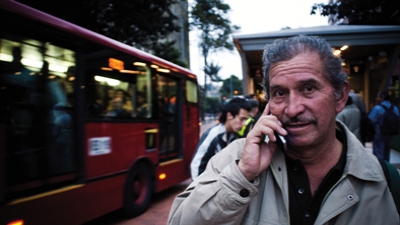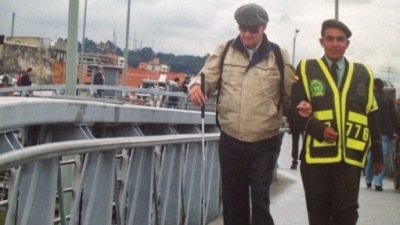Challenge
For many years the streets of large Colombian cities were battle grounds. Due to lack of adequate regulations, public transportation routes were awarded to private sector companies which acted as intermediaries, handing over the routes to individual bus owners and operators. These transport entrepreneurs, acting almost as if they were franchises, would recruit drivers to collect profits at any cost. At the same time, drivers were faced with the harsh reality of urban transport in shifts of 14 hours or more without any working benefits.
These perverse incentives resulted in a fierce competition for passengers in the streets while collecting fares, dodging pedestrians, outmaneuvering competing drivers on the same route, and simply surviving a relentless urban transport war.
Solution
Beginning in 1996, the Government adopted the National Urban Transport Program (NUTP) centered on the development of BRT investments in Colombia’s largest cities. The investment strategy targeted high quality, bus-based rapid urban mobility at a fraction of the cost of rail systems, concession arrangements for service provision (bus operation and fare collection) and measures to strengthen the institutional and regulatory weakness that permeated the sector.
Over the years, this Bank-financed program has been complemented by a comprehensive knowledge and convening services program that seeks to build the knowledge base of the Government of Colombia and municipal governments to:
- Plan, operate and assure the financial sustainability of integrated public transport systems.
- Devise travel demand management strategies and promote walking and cycling.
- Better coordinate land-use with transport demand.
- Mainstream issues of road safety, gender and universal accessibility in public transport.
Results
As of end of 2012, five of the six Bank-financed BRT systems are operating: Transmilenio-Bogotá, Megabus-Pereira, Transmetro-Barranquilla, Metroplus-Medellin, and Metrolinea-Bucaramanga. The most famous is Bogotá’s Transmilenio, conceived in 1998, and which served as a model for the roll-out of the other BRT systems. Transmilenio currently has 87 km of segregated bus lanes in operation, 115 stations, and carries close to 1.7 million passengers per day–approximately 28 percent of the city’s public transport demand. Since its inception, delegations from more than 20 countries, including China, India, Vietnam, South Africa, Kenya, Finland and the United States have visited Colombia to learn about the program.


